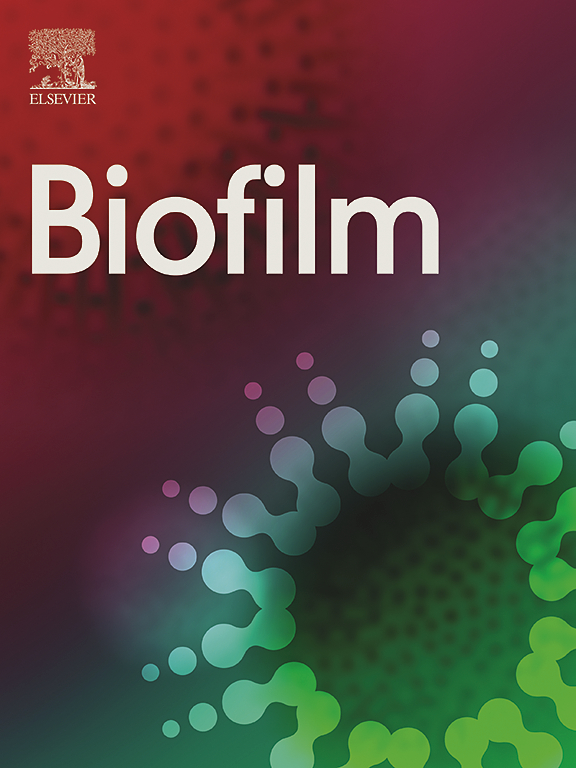The effect of multiple-enzyme treatment on in situ oral biofilm formation in healthy participants
IF 4.9
Q1 MICROBIOLOGY
引用次数: 0
Abstract
Novel approaches for the prevention of biofilm-mediated oral diseases aim to control dental biofilms rather than eradicating bacteria in the mouth. One such approach is the use of enzymes that specifically target and degrade the dental biofilm matrix and thereby facilitate biofilm removal. Matrix-degrading enzymes have consistently shown promising results in vitro, but data on in situ-grown oral biofilms are limited. This study aimed to investigate the effect of combined treatment with mutanase, beta-glucanase and DNase on in situ biofilm formation and removal, microbial biofilm composition and biofilm pH.
Biofilms from healthy participants were grown for 48 or 72 h on lower-jaw splints and enzyme or control-treated during (3x/day, 30 min) or after growth (30 min). Under the tested conditions, enzyme treatment had no significant effect on biofilm formation or removal compared to control, as assessed by optical coherence tomography and confocal microscopy. Likewise, enzymatic treatment did not induce significant changes in the microbial composition of the biofilms that were dominated by Streptococcus, Haemophilus, Neisseria, Veillonella and Fusobacterium species. The biofilm pH response to a sucrose challenge was assessed using confocal microscopy-based pH ratiometry, and the average biofilm pH was not significantly different between the intervention groups. Under the conditions employed in this study, the tested enzymes had no significant impact on in situ grown biofilms. The treatment regimen, the biofilm composition, or the analytical methods employed may explain the difference to previous results. Further studies are warranted to assess the therapeutic potential of multi-enzyme treatment for dental biofilm control.
多酶治疗对健康受试者口腔原位生物膜形成的影响
预防生物膜介导的口腔疾病的新方法旨在控制牙齿生物膜而不是根除口腔中的细菌。其中一种方法是使用专门针对并降解牙齿生物膜基质的酶,从而促进生物膜的去除。基质降解酶在体外一直显示出有希望的结果,但关于原位生长的口腔生物膜的数据有限。本研究旨在探讨诱变酶、β -葡聚糖酶和dna酶联合处理对原位生物膜形成和去除、微生物生物膜组成和生物膜ph的影响。健康参与者的生物膜在下颌夹板上生长48或72小时,并在生长期间(3次/天,30分钟)或生长后(30分钟)进行酶处理或对照处理。在测试条件下,通过光学相干断层扫描和共聚焦显微镜评估,与对照组相比,酶处理对生物膜的形成或去除没有显著影响。同样,酶处理也没有引起生物膜微生物组成的显著变化,这些生物膜主要由链球菌、嗜血杆菌、奈瑟菌、细孔菌和梭杆菌等物种组成。采用共聚焦显微镜为基础的pH比率法评估生物膜pH值对蔗糖挑战的反应,干预组之间的平均生物膜pH值无显著差异。在本研究的条件下,所测试的酶对原位生长的生物膜没有显著的影响。治疗方案、生物膜组成或所采用的分析方法可以解释与先前结果的差异。需要进一步的研究来评估多酶治疗牙生物膜控制的治疗潜力。
本文章由计算机程序翻译,如有差异,请以英文原文为准。
求助全文
约1分钟内获得全文
求助全文

 求助内容:
求助内容: 应助结果提醒方式:
应助结果提醒方式:


